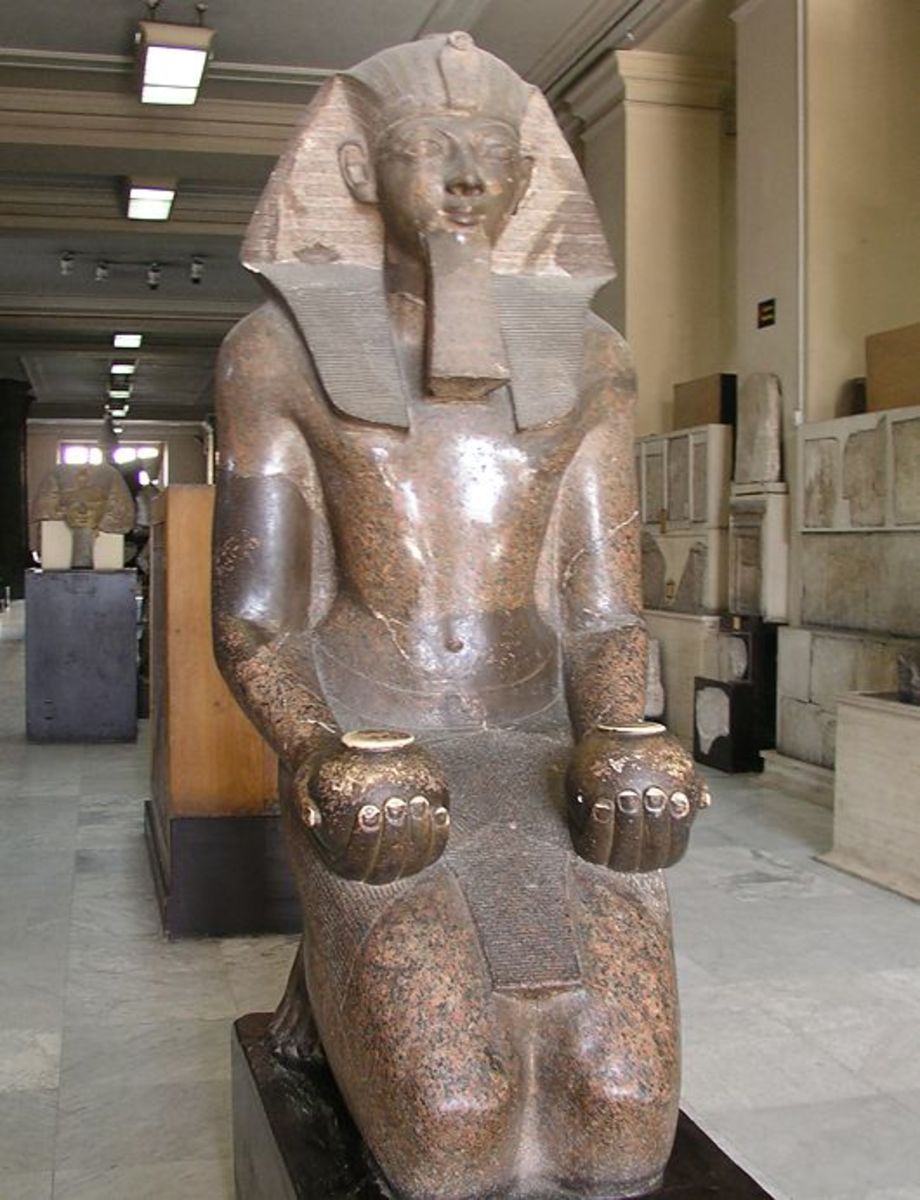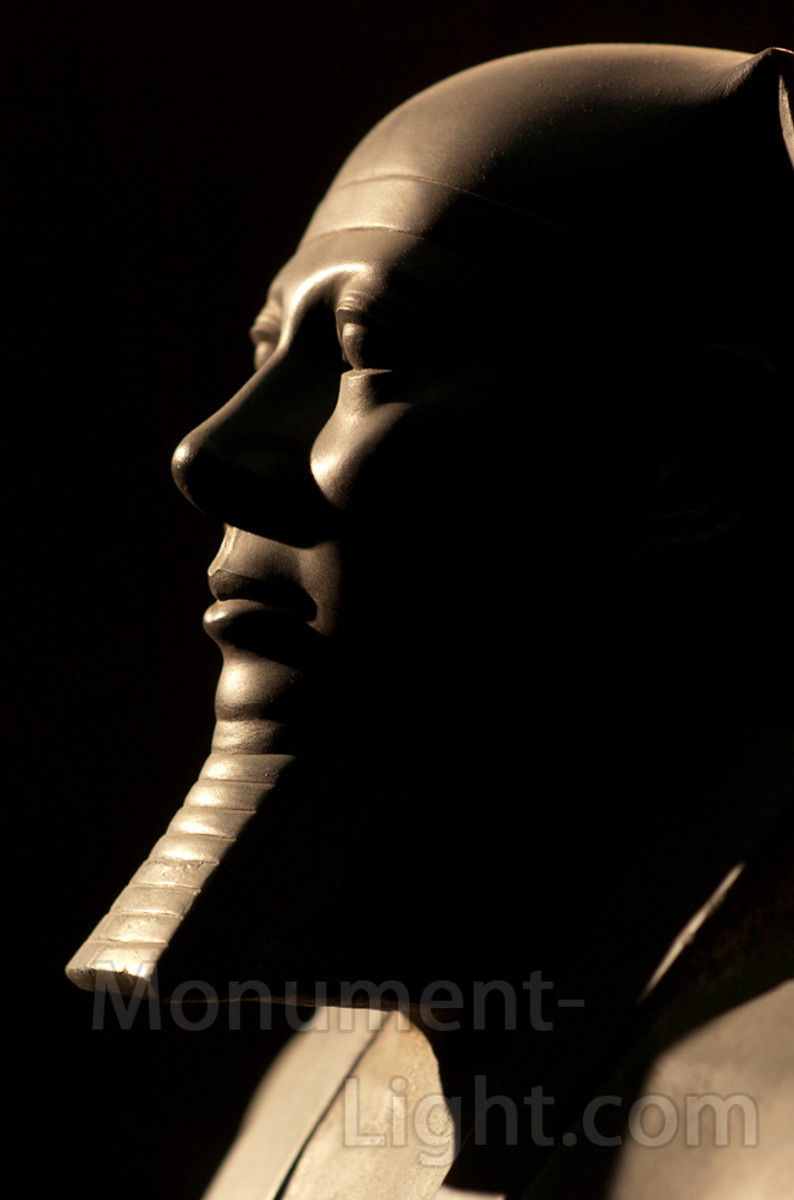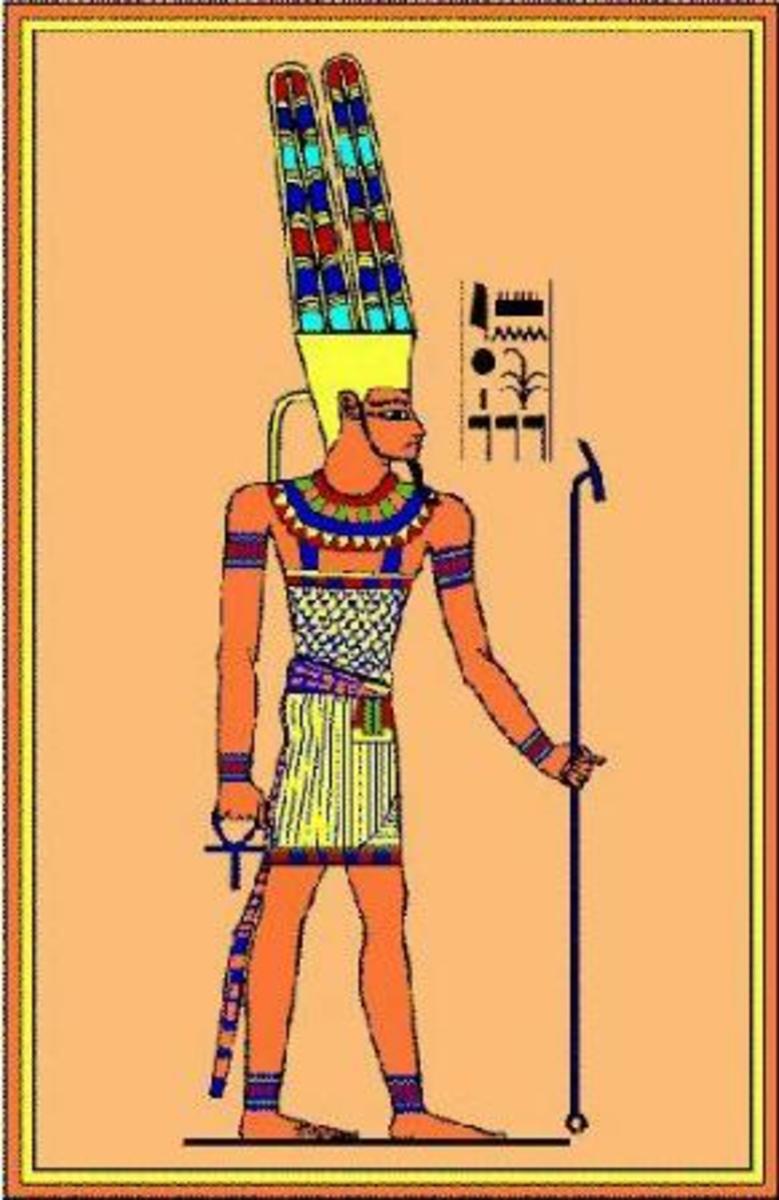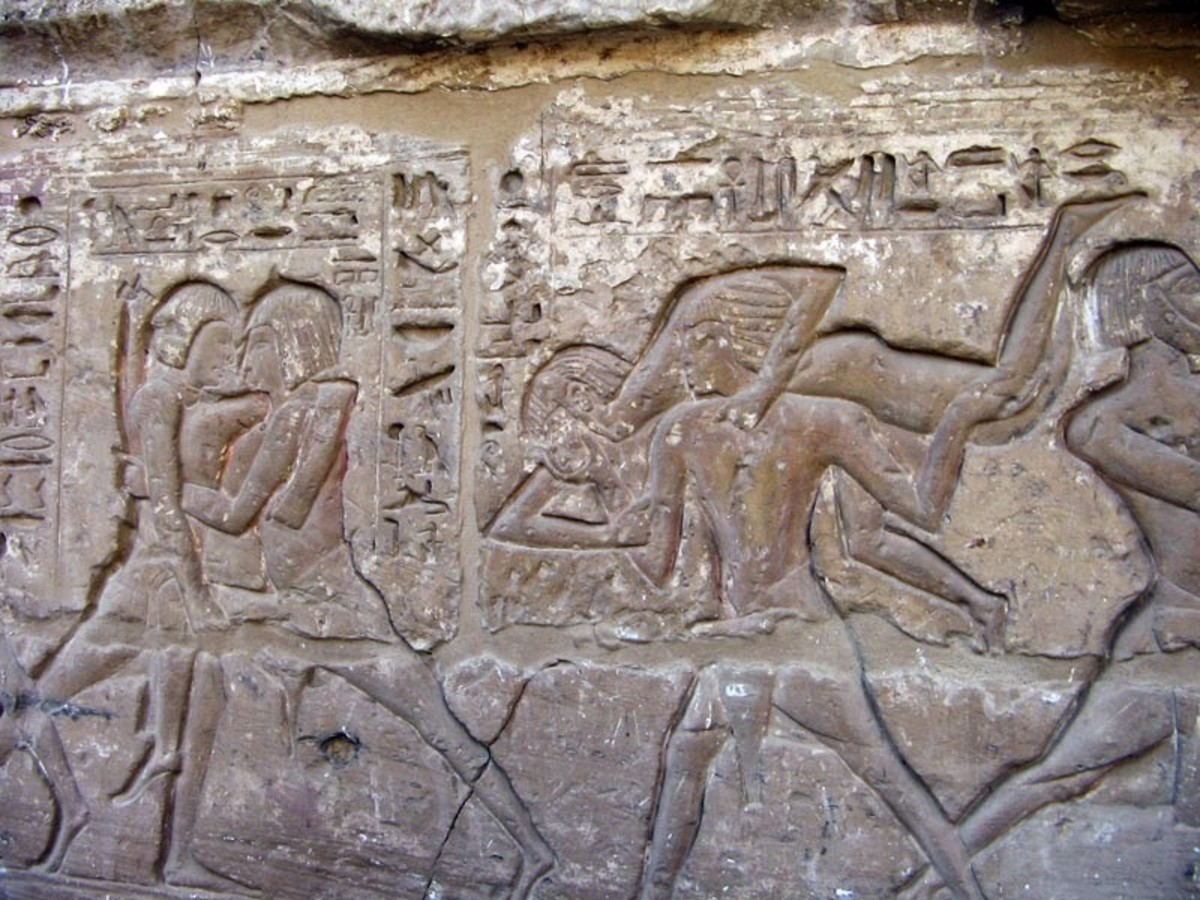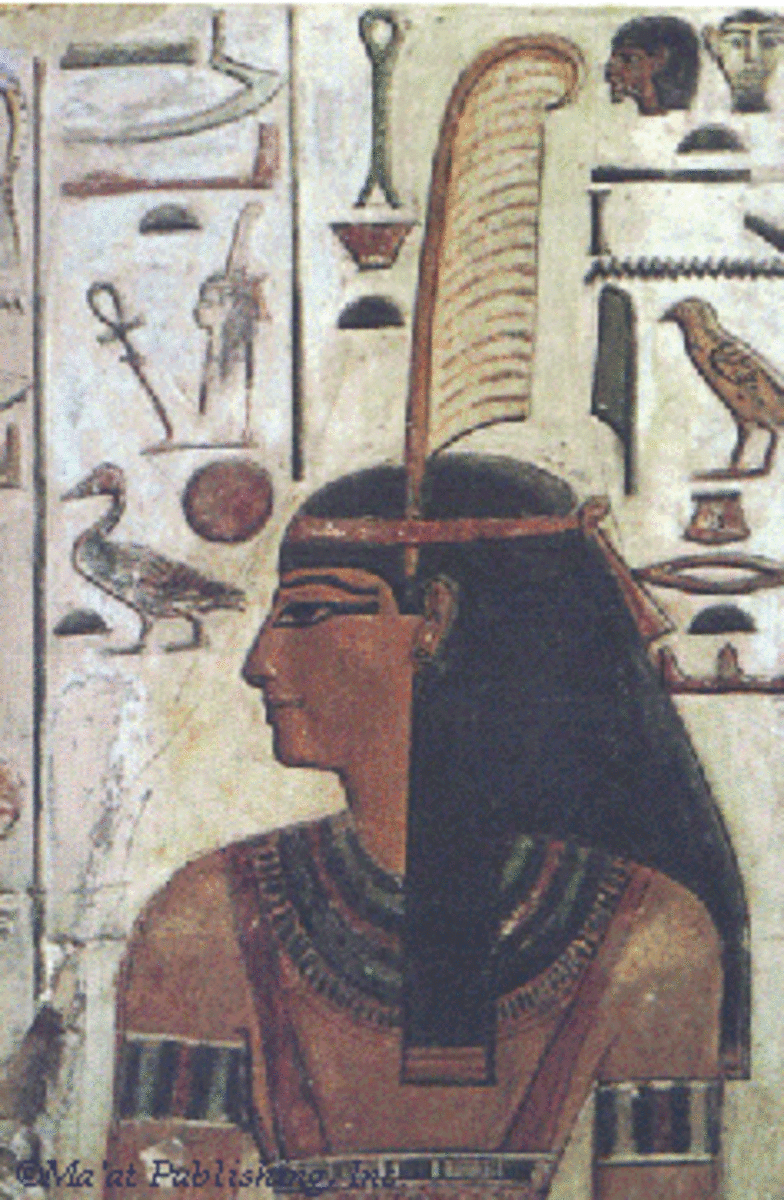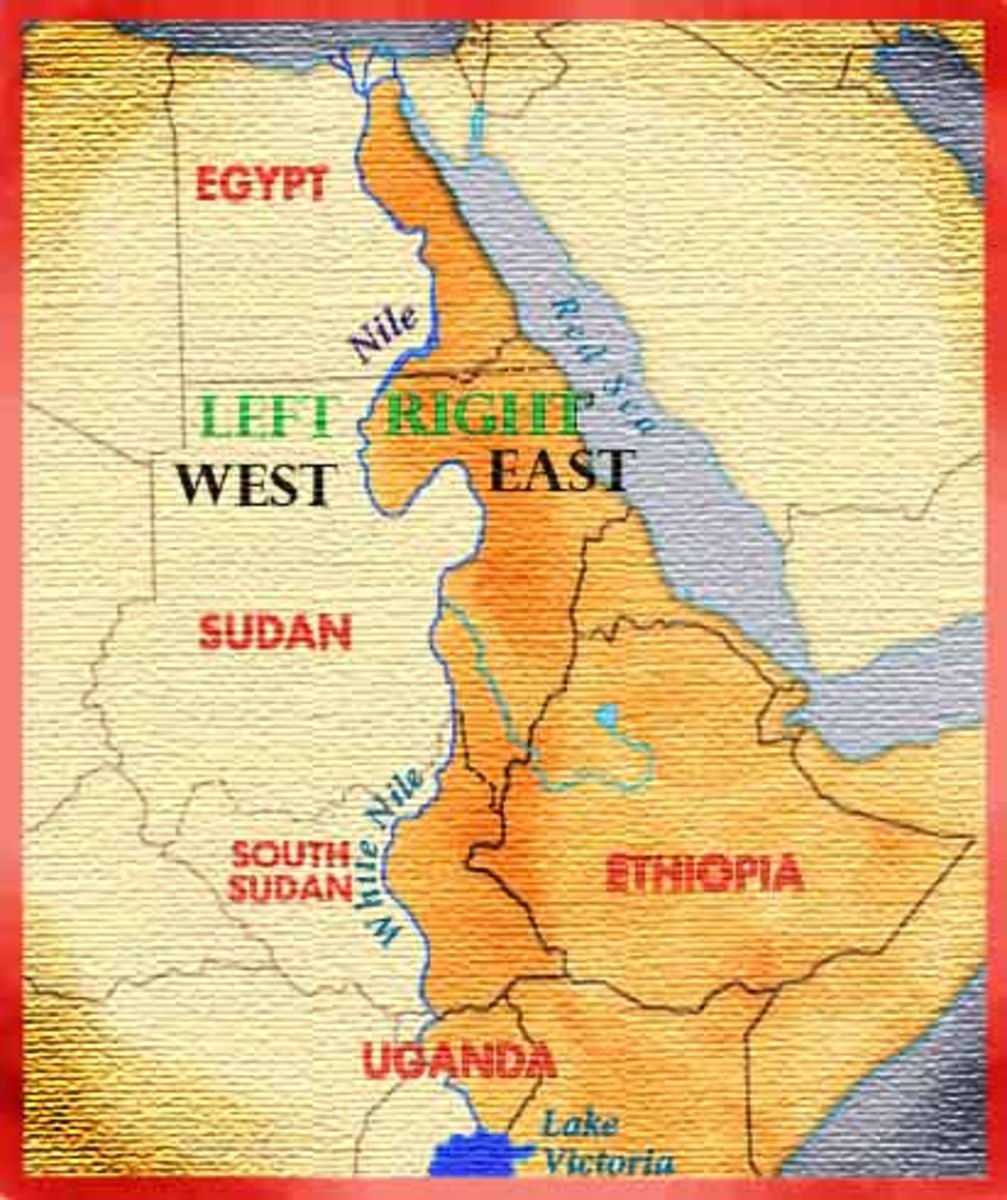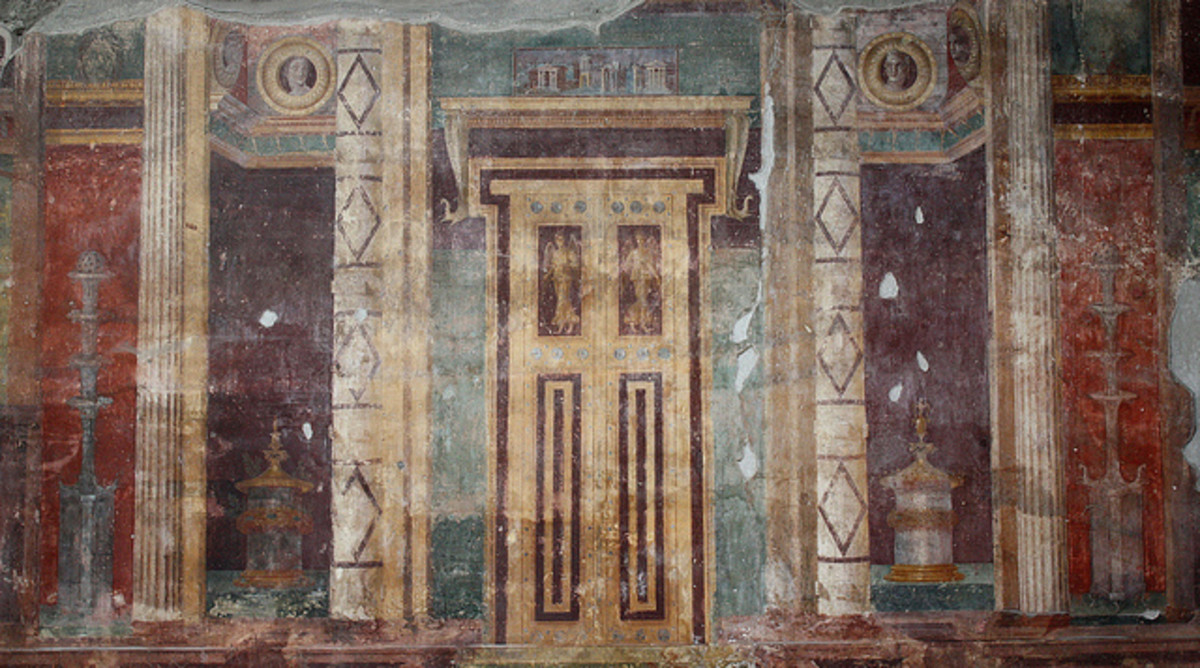Monotheism and Polytheism: The Ancient Egyptian’s View
When attempting to discern the differences and similarities of the states of monotheism and polytheism within the world of the Ancient Egyptian, we must first come to terms with the ancient mind. They viewed the subject of religion with the mind of myth, and to understand their system we cannot inflict our modern value judgements upon it. Not even our version of the meaning of ‘fact’ is comparable to the ancient mind that “had an entirely different attitude toward any kind of observed process” (Wilson 2). We think in terms of “antecedents and consequents” (Wilson 2), whereas the ancients did not think in such linear terms, and were “satisfied to find divine beginnings” where “the element of the miraculous is fundamental” (Wilson 3). Through various gods the Ancient Egyptian attempted to organise his world, and over time these gods fluctuated between various degrees of monotheism and polytheism. From the Archaic Period through to the New Kingdom, a period of over two thousand years, the Egyptian’s gods would grow and evolve and change in importance. The line between true monotheism and polytheism was redrawn throughout their history. This elastic line, along with their concept of Ma’at, and the tendency to syncretise gods gave Egypt a unique standing in the religious world of the ancients.
Old Kingdom
From her early beginnings Egypt’s unique development was promoted by a geographic isolation. Prior to unification she developed into city-states or nomes where each subscribed to their own capitals, armies, leaders, and local gods. With unification Egypt founded a national government and “the local sun god of Heliopolis, Re, was transformed into an Egyptian national God” (Gabriel 5). Along with Re came the idea of the divine king, and the important foundation that Re wished men to practice Ma’at which became the “earliest Egyptian ethical precept” (Gabriel 5).
The Heliopolitan system of the Old Kingdom dynasties comprised several gods all created from Re by Re. Shu (dryness) and Tefnut (humidity) created Nut (sky) and Geb (earth) who in turn had four children Isis, Osiris, Set, and Nephthys. From this basic creation myth many other legends were added “to incorporate local deities ... in the cosmology or to achieve the syncretic fusion of several groups” (Grimal 43). The priesthood which would evolve from, and with, the Heliopolitan story became stronger, and Re the sun god became equivalent to a state god. Yet, despite this, people would remain loyal to their local gods, many of which the throne would increasingly recognise through donations of land and tax exemptions. It seems as though polytheism was in full swing, yet the ‘top’ god was Re who would continue to dominate the politics and culture.
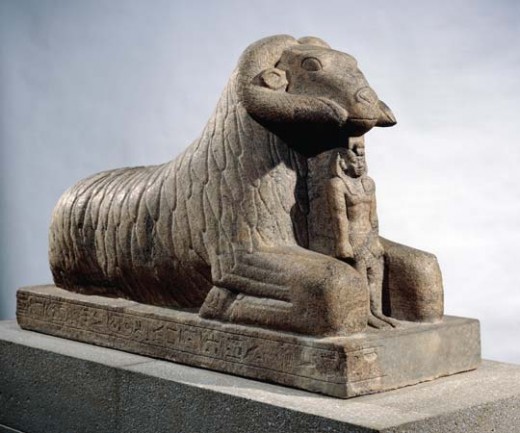
First Intermediate Period
The optimism and materialism which guarded Egypt through her Old Kingdom dynasties, gave way to the confusing era of the First Intermediate Period where the land, once again, was divided between families in Thebes and Herekleopolis. The Egyptian attitude changed to one of pessimism and was reflected in its literature. The Story A Man and His Ba is decidedly un-Egyptian, and the Admonitions of Ipuwer would have been inconceivable in the Old Kingdom. Yet through the confusion of the time a type of democratisation or socialism would prove to eventually move Egypt spiritually to a kinder, gentler Re of the Middle Kingdom.
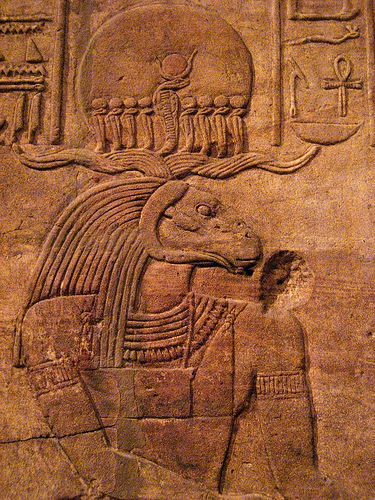
Middle Kingdom
Working in tandem with a benevolent Re, Osiris of the Archaic mythology came to represent this new ethical attitude. He became “the great god of all necropolises” (Callender 179), and his rise was due to the great attention lavished on him by the Middle Kingdom rulers. The Osirian cult has been “sometimes described as the democratisation of the afterlife” (Callender 180). No longer were funerary rights granted only to the elite. Ordinary people, because they were now “equal in the eyes of god”, were considered part of “final judgement and eternal life” (Gabriel 26).
This equality prompted the idea that all men had a ‘ba’ or spiritual self and thus had “direct personal access to deities rather than via the king or priests” (Callender 181). Personal piety arose and from this grew the negative confessions. Along with this widening of religious acceptance among the Egyptians came the resurgence of an older god, Amun, who became one with Re.
Amun, or the ‘hidden one’, along with Amaunet was originally one of the eight pairs of the Hermopolitan Ogdoad. In the Middle Kingdom, “when Thebes flourishes he becomes the national god Amon-Rasonther ... [and] combined with Mut and Khons, forms the Theban triad” (Morenz 258). Later the triad would consist of Re, Osiris, and Amun. At this time the former god “became the helper of the poor, the protector of the weak, a loving father and an incorruptible judge, who treated rich and poor alike” (Gabriel 27). Many would seek him out for comfort. His membership in triads or trinities seemed to foretell another religion which also followed a similar form of ma’at in ethics and conscience. Even though polytheism was clearly evident in Egypt’s Middle Kingdom, one can’t help but see shades of Christianity’s Father, Son and Holy Spirit, and despite the pantheon of gods, Re throughout most of his history seems to, especially in the kinder Middle Kingdom, fit the role of ‘Father’. Yet more evidence of another triad would visit Egypt in the Amarna Period.
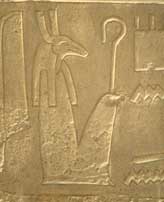
Second Intermediate Period
Prior to this, however, the Second Intermediate Period saw the division of Egypt once again, yet this time with a foreign twist in terms of religion and government. Over many generations leading up to the period many foreigners from the area of Syria/Palestine made their home in the Delta area. Eventually these ’Hyksos’ would gain a formidable control of the area and spread further south. Interestingly in the religious sense, this would be a time of elevation for Seth, the brother of Osiris. He would be “regarded as god of the desert and the storm, and therefore becomes lord of foreign lands” (Morenz 268) in Egypt. Monuments of the period “made by Egyptians for the Hyksos rulers ... afforded evidence that the Egyptian artists represented the Hyksos as worshipers of Seth” (The Velde 121). Because the Hyksos “introduced an exotic form of religion into Egypt” (The Velde 121), the native population probably saw it as resembling Seth. Whether this was a Ba’al/Seth syncretism is unclear, yet the characteristics of both gods seem to resemble one another. Prior to this most syncretism had been limited to local Egyptian gods, but perhaps in an era of greater and greater foreign influence such a union was apt. Eventually through Ahmose, the foreign control would be driven out and Egyptian attitudes would once again change in accordance with their experiences.
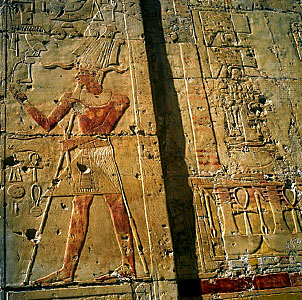
New Kingdom
The New Kingdom begun by Ahmose brought “a new vision of religion” (Meskell 21), and throughout the era new gods were assimilated from conquered lands, yet Re would remain the principle god. While the priests of Amun were gaining more and more power “religion became increasingly more personal” (Meskell 21). The everyday individual had more opportunities to worship “through ... local chapels ... pilgrimages to great temples at festival times, and maintenance of statuettes of deities in domestic settings” (Meskell 21). In general the Thebans believed in “three fundamental and, in essence, universal religious ideas” including “a belief ... in a supreme god ... a divine order [and] above all a belief in life after death” (Riefstahl 124-5). Amun embodied these beliefs. The rulers of the Eighteenth Dynsasty didn’t just build temples and donate land to him for political purposes, “they believed in him”, and brought “all others gods and their temples and priesthoods under his control” (Riefstahl 137). This commitment extended to incorporate other countries of the empire. Thutmose III said “’He seeth the whole earth hourly’” (Gabriel 33). This new idea prompted another stride toward monotheism and “is the first known inkling of a universal god who cares for all peoples equally” (Gabriel 33). Shades of the Memphite Drama re-entered, and the paradox of Egyptian thought becomes evident. Their “tolerance of ... polytheism ... led eventually to monotheistic thinking” (Gabriel 34). While local gods were still observed, the Egyptian recognised them as “very different from the major gods in the same way, perhaps, that Christian saints differ from the deity” (Gabriel 34). Despite their adherence to Amun, the power of the priesthood did not go unnoticed by the royal throne.
Amunhotep III would try “to counterbalance this development by commissioning an enormous number of statues of a multitude of deities and by developing a cult of their earthly manifestations as sacred animals” (Van Dijk 273). Yet it is clear from the many hymns to the sun god, that Amun is “clearly set apart from the other gods [and] the other deities are part of his creation, alongside men and animals” (Van Dijk 273). Amunhotep IV, or Akhenaton, would find a way around this difficulty of Amun, if only briefly, with another version of monotheism.
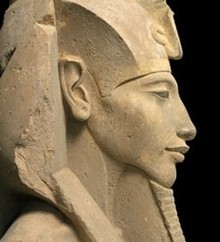
Atonism
Through Akhenaton, the Aton became a “narrowly defined monotheism” (Luckert 107). This sun deity had been around since the Twelfth Dynasty “and became frequent during the reign of Amunhotep III” (Luckert 107). Akhenaton would create a new capital named Amarna to house himself and his new god. Yet the rays of this new deity, according to Cyril Aldred. “do not give life to each person, but bring its breath only to the nostrils of the king and queen” (Aldred 239) where Akhenaton “claimed Son of God status for himself” (Luckert 108). Luckert sees the king’s “monotheistic solar theology as a feeble attempt to become an absolute divine Sun-king”.
Whether Atonism, or the cult of Amun, were considered monotheisms or not has been greatly debated over the years. John Wilson believes the syncretism of Amun and other deities had the potential for becoming monotheism, but never quite made it “because the blending of different beings into a single being for a functional purpose never destroyed the separate identities of those beings” (Wilson 209). He believes that the idea of monotheism “rests upon a misunderstanding of Egyptian psychology” (Wilson 210). As to Atonism Wilson is in agreement with Aldred that it was self-centred, and not a monotheism. This is based in part on modern meanings of Jewish, Christian and Moslem faiths where “there is one – and only one – God and that all ethical and religious values derive from that God” (Wilson 224). He sees atomism as having two gods, and “that the Aton was concerned strictly with creating and maintaining life [but] that ethics and religion derived from the pharaoh Akh-en-Aton” (Wilson 224). He also points out that like the Aton, gods through the history of Egypt had often been called the “sole god, like whom there is no other” and often focussed “attention on one god, to the exclusion of others” which is more of an ‘henotheism or monolatry” and that it does not “imply the absolute unity carried by the Moslem” (Wilson 224-5). Whether the Ancient Egyptian considered either religion to be a monotheism or whether it was even a consideration within their understanding of religion will probably never be known. Amun would outlive the new religion, and continue to thrive and this “cult of the hidden god responded to ... the existential needs of Egypt’s people” (Luckert 110).
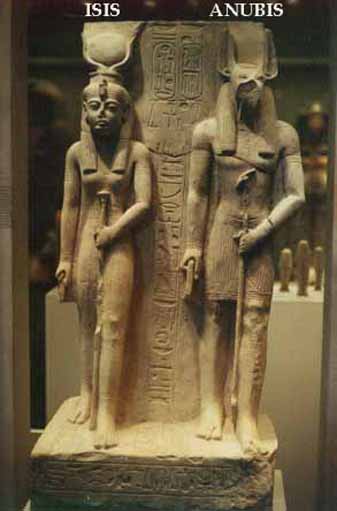
Monotheism or Polytheism?
A quote from the Leiden Papyrus perhaps sums it up; “Three are all the gods, Amun, Re, and Ptah. Aside from these is none. He who hides his name behind (the word) ‘Amun’ is Re at his head, Ptah at his body. His cities on earth are eternal: Thebes, Heliopolis, and Memphis – forever”. The trinity suggested in this passage “resounds vibrantly alive” (Luckert 113) even today.
Our abstract method of thinking today has brought our entire world, and us, to the brink of something unthinkable. The mythopoeic mind of the Ancient Egyptian kept them in touch with their natural world and gave them a sense of its importance. Whether they accomplished this through monotheism or polytheism seems a moot point when one searches back through their history and realises their balance, or ma’at, seemed to follow them through their variations of spirituality. Our mistaken feelings of superiority over the ancient mind only succeed in pointing out that somewhere along the line we have lost our own ma’at, and as a consequence mutilated necessary spirit and nature.
Sources Consulted and Cited
1) Aldred, Cyril. Akhenaten, King of Egypt. London: Thames and Hudson, 1988.
2) Budge, A.E. Wallis. From Fetish to God in Ancient Egypt. New York: Dover Publications, 1988.
3) Callender, Gae. The Oxford History of Ancient Egypt. Ed. Ian Shaw. Oxford: Oxford University Press, 2000.
4) Gabriel, Richard A. The Gods of Our fathers: The Memory of Egypt in Judaism and Christianity. Westport, Connecticut: Greenwood Press, 2002.
5) Grimal, Nicholas. A History of ancient Egypt. Oxford: Blackwell Publishing, 2003.
6) Luckert, Karl W. Egyptian Light and Hebrew Fire. Albany: State University of New York Press, 1991.
7) Meskell, Lynn. Private Life in New Kingdom Egypt. Princeton; Princeton University Press, 2002.
8) Morenz, Siegfried. Egyptian Religion. Ithica: Cornell University Press. 1984.
9) Riefstahl, Elizabeth. Thebes in the Time of Amunhotep III. Norman: University of Oklahoma Press, 1971.
10) Te Velde, H. Seth, God of Creation. Leiden: E.J. Brill, 1967.
11) Van Dijk, Jacobus. The Oxford History of Ancient Egypt. Ed. Ian Shaw. Oxford: Oxford University Press, 2000.
12) Wilson, John A. The Culture of Ancient Egypt. Chicago: The University of Chicago Press, 1965.


